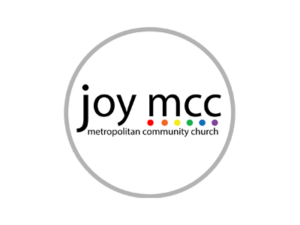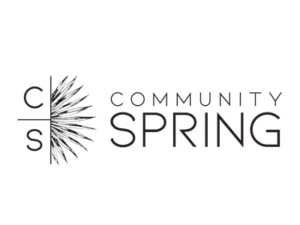Growing up, I was taught there are things you don’t talk about. The daughter of Mexican immigrants, I learned that subjects not meant for polite conversation were many and varied. Topics such as mental health, sexual orientation, and familial hardships were off the table.
It is a generational silence, passed down from generation to generation, transported across borders and finding new soil in the United States. It is a silence that kills.
One example of where this silence has profoundly impacted Latine communities is the ongoing HIV/AIDS epidemic.
In 2015, 9,798 HIV infections were recorded amongst Latine communities in the United States. In 2020, when numbers nationwide were shown to be decreasing, numbers amongst Latine individuals were still high, with over 8,000 people reporting infections. This number is large on its own and made only more concerning when contextualized within the population. Latine identifying people accounted for only 18% of the U.S. population in 2015, but 24% of all infections reported in the U.S. are amongst the Latine community, according to the CDC. 1
Since the beginning of the American HIV/AIDs epidemic in 1981, 129,295 Latine people have died of the disease, the number growing exponentially over the decades.
In a study about HIV diagnoses amongst Latine women in the U.S., researchers found that, “For most of the women, only a handful of people knew about their HIV status, and in some cases they had only talked with God about their diagnosis. Those women who were married or partnered had told their husband/partner, most often because the partner was also HIV-infected. Only one woman had disclosed her HIV diagnosis to her children and few had told even close family members. In fact, most stated that informing family members, in general those with whom they were closest on all other issues, was not an option, because relatives not only would not understand but also would reject the woman. Furthermore, it was believed that an HIV diagnosis would pose too great a burden for the family”. 2
HIV/AIDs continues to be taboo within Latine communities. This misguided and misinformed belief states that HIV is something that happens to bad people and only infects people who engage in irresponsible or perverse behaviors. These beliefs, which are rooted in homophobia and sex-shaming conservatism, blind people to their own risk of contracting the disease and isolate those who test positive.
Ending this silence is not just a matter of translating healthcare resources and pamphlets into Spanish. Attitudes within the various Latine communities existing within the U.S. need to change as well. The perception of HIV as a queer issue or one that only concerns the sexually promiscuous has to be done away with. This can be done with greater dissemination of factual information regarding methods of transmission, populations affected, and what measures individuals can take to protect themselves. Additionally, this information should be made available outside of doctor offices or medical centers. Studies have shown the effectiveness of community-based outreach, with the utilization of places such as churches and recreation centers, to distribute information. 3
As in many other issues, this epidemic exists at an intersection of other pressing concerns that trouble Latine populations across the United States. It wasn’t so long ago, after all, that President Obama ended a 22-year restriction on immigration to the U.S. for immigrants living with HIV/AIDS.
Of course, there are additional challenges existing outside of immigration. These challenges include housing, access to health care and medication, and intravenous drug use. All of these are compounded within the high rate of HIV infections amongst Latine groups. The myopic view of Latinidad in mainstream news media often loses the nuanced realities of these various issues. As with many other challenges impacting marginalized groups within the United States today, tackling the problem requires restructuring and reform across multiple levels, from the personal to the institutional, necessitating change in both policy and law as well as among cultural attitudes.
In 2014, the CDC used the slogan We Can Stop HIV One Conversation at a Time. Studies support this. People who receive more communication about HIV are more likely to be knowledgeable about preventive measures, more likely to access testing and other health resources, and have a less stigmatized view of HIV overall. 4 These are conversations that need to take place in multiple spheres of life, not just in doctors’ offices, but amongst friends and family. Open communication reduces transmission rates between partners and can decrease the sense of isolation felt by individuals who test positive.
Since its creation in 2003, National Latinx AIDS Awareness Day (NLAAD), observed on October 15, has attempted to end the silence surrounding HIV/AIDs in the Latine community. As one CDC NLAAD post reads: “HIV is just a virus. It’s the stigma that is the deadly disease.” 5
I think it’s fair to say it’s the stigma that silences us. And it is well past time to break that silence.
- Center for Disease Control (2015). HIV Surveillance Report, Volume 27. Diagnoses of HIV
Infection in the United States and Dependent Areas, 2015. Retrieved from https://www.cdc.gov/
hiv/pdf/library/reports/surveillance/cdc-hiv-surveillance-report-2015-vol-27.pdf ↩︎ - Enriquez, M., Kelly, P. J., Witt, J., Rodriguez, L., Lopez, N., Smueles, J., Romey, T., & Sweet, D. (2010). Silence is not golden: invisible Latinas living with HIV in the Midwest. Journal of immigrant and minority health, 12(6), 932–939. https://doi.org/10.1007/s10903-010-9346-4 ↩︎
- Rhodes, S. D., Leichliter, J. S., Sun, C. J., & Bloom, F. R. (2016). The HoMBReS and HoMBReS Por un Cambio Interventions to Reduce HIV Disparities Among Immigrant Hispanic/Latino Men. MMWR supplements, 65(1), 51–56. https://doi.org/10.15585/mmwr.su6501a8 ↩︎
- Abubakari, G. M., Smith, M. D. R., Boyd, D. T., Ramos, S. R., Johnson, C., Benavides, J. L., Threats, M., Allen, J. L., & Quinn, C. R. (2022). Assessing Different Types of HIV Communication and Sociocultural Factors on Perceived HIV Stigma and Testing among a National Sample of Youth and Young Adults. International journal of environmental research and public health, 19(2), 1003. https://doi.org/10.3390/ijerph19021003 ↩︎
- Center for Disease Control (2023). Cdc.gov. https://www.cdc.gov/hiv/images/library/awareness/nlaad/2022/cdc-hiv-nlaad-2022-anthony.mp4 ↩︎









